常用数据结构之String字符串
字符串
在Java编程语言中,字符可以使用基本数据类型char来保存,在 Java 中字符串属于对象,Java 提供了 String 类来创建和操作字符串。
操作字符串常用的有三种类:String、StringBuilder、StringBuffer
接下来看看这三类常见用法
String
String value = new String("测试下");
System.out.println(value);特点:
不可变
String value_a = "测试下原来值";value_a = "改变了";System.out.println(value_a);实际打印
改变了
看起来好像改变了,那string为啥还具有不可变的特点呢
那咱来看看以上程序执行过程中value_a的指向

可以看到原来value_a指向“测试下原来值”字符串,后来有指向了“改变了”
为啥String不可变,咱进入String源码看看咋实现的
public final class Stringimplements java.io.Serializable, Comparable<String>, CharSequence {/** The value is used for character storage. */private final char value[];/** Cache the hash code for the string */private int hash; // Default to 0/** use serialVersionUID from JDK 1.0.2 for interoperability */private static final long serialVersionUID = -6849794470754667710L;/*** Class String is special cased within the Serialization Stream Protocol.** A String instance is written into an ObjectOutputStream according to* <a href="{@docRoot}/../platform/serialization/spec/output.html">* Object Serialization Specification, Section 6.2, "Stream Elements"</a>*/private static final ObjectStreamField[] serialPersistentFields =new ObjectStreamField[0];/*** Initializes a newly created {@code String} object so that it represents* an empty character sequence. Note that use of this constructor is* unnecessary since Strings are immutable.*/public String() {this.value = "".value;}/*** Initializes a newly created {@code String} object so that it represents* the same sequence of characters as the argument; in other words, the* newly created string is a copy of the argument string. Unless an* explicit copy of {@code original} is needed, use of this constructor is* unnecessary since Strings are immutable.** @param original* A {@code String}*/public String(String original) {this.value = original.value;this.hash = original.hash;}/*** Allocates a new {@code String} so that it represents the sequence of* characters currently contained in the character array argument. The* contents of the character array are copied; subsequent modification of* the character array does not affect the newly created string.** @param value* The initial value of the string*/public String(char value[]) {this.value = Arrays.copyOf(value, value.length);}/*** Allocates a new {@code String} that contains characters from a subarray* of the character array argument. The {@code offset} argument is the* index of the first character of the subarray and the {@code count}* argument specifies the length of the subarray. The contents of the* subarray are copied; subsequent modification of the character array does* not affect the newly created string.** @param value* Array that is the source of characters** @param offset* The initial offset** @param count* The length** @throws IndexOutOfBoundsException* If the {@code offset} and {@code count} arguments index* characters outside the bounds of the {@code value} array*/public String(char value[], int offset, int count) {if (offset < 0) {throw new StringIndexOutOfBoundsException(offset);}if (count <= 0) {if (count < 0) {throw new StringIndexOutOfBoundsException(count);}if (offset <= value.length) {this.value = "".value;return;}}// Note: offset or count might be near -1>>>1.if (offset > value.length - count) {throw new StringIndexOutOfBoundsException(offset + count);}this.value = Arrays.copyOfRange(value, offset, offset+count);}/*** Allocates a new {@code String} that contains characters from a subarray* of the <a href="Character.html#unicode">Unicode code point</a> array* argument. The {@code offset} argument is the index of the first code* point of the subarray and the {@code count} argument specifies the* length of the subarray. The contents of the subarray are converted to* {@code char}s; subsequent modification of the {@code int} array does not* affect the newly created string.** @param codePoints* Array that is the source of Unicode code points** @param offset* The initial offset** @param count* The length** @throws IllegalArgumentException* If any invalid Unicode code point is found in {@code* codePoints}** @throws IndexOutOfBoundsException* If the {@code offset} and {@code count} arguments index* characters outside the bounds of the {@code codePoints} array** @since 1.5*/public String(int[] codePoints, int offset, int count) {if (offset < 0) {throw new StringIndexOutOfBoundsException(offset);}if (count <= 0) {if (count < 0) {throw new StringIndexOutOfBoundsException(count);}if (offset <= codePoints.length) {this.value = "".value;return;}}// Note: offset or count might be near -1>>>1.if (offset > codePoints.length - count) {throw new StringIndexOutOfBoundsException(offset + count);}final int end = offset + count;// Pass 1: Compute precise size of char[]int n = count;for (int i = offset; i < end; i++) {int c = codePoints[i];if (Character.isBmpCodePoint(c))continue;else if (Character.isValidCodePoint(c))n++;else throw new IllegalArgumentException(Integer.toString(c));}// Pass 2: Allocate and fill in char[]final char[] v = new char[n];for (int i = offset, j = 0; i < end; i++, j++) {int c = codePoints[i];if (Character.isBmpCodePoint(c))v[j] = (char)c;elseCharacter.toSurrogates(c, v, j++);}this.value = v;}
}可以看到String类有个final修饰符,final修饰符,用来修饰类、方法和变量,final 修饰的类不能够被继承,修饰的方法不能被继承类重新定义,修饰的变量为常量,是不可修改的
相当于string类型指向的具体内容不会变,例如刚才的例子,
value_a = "测试下原来值"; 这个数值不会变,原本有这个字符串有char value[]来进行保存本质不会被修改
value_a = "改变了"; 后续改变value_a的数值,会把原本value_a的引用指向新的字符串"改变了",而不是改变原来有char value[]保存的"测试下原来值",但由于无引用指向原来的字符串"测试下原来值",会被垃圾回收掉
结论:String不可变指的是String的内容不会变,但是可以改变String引用指向新的字符串
接下来看个🌰
String pre = "Hello,World";String new_value = "Hello,World";String object_value = new String("Hello,World");System.out.println(object_value.hashCode());System.out.println(pre.hashCode());System.out.println(new_value.hashCode());System.out.print("通过==判断pre是否与new_value相等->");System.out.println(pre==new_value);System.out.print("通过==判断pre是否与object_value相等->");System.out.println(pre==object_value);System.out.println("----------------");System.out.print("通过.equals判断pre是否与new_value相等->");System.out.println(pre.equals(new_value));System.out.print("通过.equals判断pre是否与object_value相等->");System.out.println(pre.equals(object_value));以上程序分别会打印true还是false呢
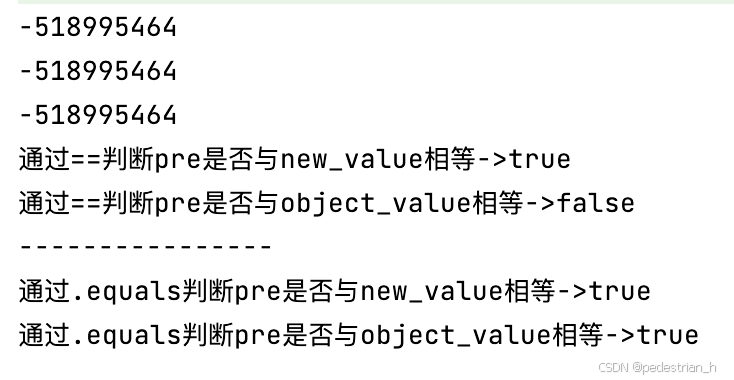
可以看到通过字面创建的"Hello,World",不管新建多少次,==判断和equals判断都相等
通过对象创建的"Hello,World"和字面量新建的字符串通过==判断也相等,但是通过equals判断对象创建和字面量创建返回的false
首先来看看equals和==的区别
equals与==区别
==:判断两个对象的地址是否相等
equals:Object超级父类有个equals方法
public boolean equals(Object obj) {return (this == obj);}
Object是直接判断两者地址是否相同,与==作用相同
而且所有的对象都会继承Object类
可以看看官方的解释
package java.lang;/*** Class {@code Object} is the root of the class hierarchy.* Every class has {@code Object} as a superclass. All objects,* including arrays, implement the methods of this class.*类对象是类层次结构的根。每个类都有Object作为超类。所有对象,包括数组,都实现了此类的方法。* @author unascribed* @see java.lang.Class* @since JDK1.0*/
public class Object所以String也继承了Object类,具有equals方法
来看看String的equals的方法咋实现的呢
public boolean equals(Object anObject) {if (this == anObject) {return true;//假设两个对象地址相同==,则返回true 相当于两者相同}if (anObject instanceof String) {String anotherString = (String)anObject;int n = value.length;if (n == anotherString.value.length) {char v1[] = value;char v2[] = anotherString.value;int i = 0;while (n-- != 0) {//循环遍历String的value数组if (v1[i] != v2[i])return false;//其中有任何一个不同,认定两者不同i++;}return true; //所有字符都相同的情况下,相当于两者相同}}return false; //把不是String类与String对比 相当于两者不同}可以看出来String的equals方法
1,假设两个对象地址相同==,则返回true 相当于两者相同
2,判断对象是否属于string
3,循环遍历String的value数组,其中有任何一个不同,认定两者不同
4,所有字符都相同的情况下,相当于两者相同
5,不是String类与String对比 相当于两者不同
而Object是直接判断两者地址是否相同
所以再看看之前举的🌰
String pre = "Hello,World";String new_value = "Hello,World";String object_value = new String("Hello,World");System.out.println(object_value.hashCode());System.out.println(pre.hashCode());System.out.println(new_value.hashCode());System.out.print("通过==判断pre是否与new_value相等->");System.out.println(pre==new_value);System.out.print("通过==判断pre是否与object_value相等->");System.out.println(pre==object_value);System.out.println("----------------");System.out.print("通过.equals判断pre是否与new_value相等->");System.out.println(pre.equals(new_value));System.out.print("通过.equals判断pre是否与object_value相等->");System.out.println(pre.equals(object_value));pre和new_value都是通过字面量的形式创建的字符串,"Hello,World"字符串会保存到常量池当中,新建了pre引用变量和new_value引用变量指向的同一个"Hello,World"对象,所以两者本质属于同个对象,所以==和equals都相同
object_value在堆中新建了对象,object_value引用变量指向堆中的"Hello,World"对象
所以pre==object_value会返回false,两者属于两个对象
pre.equals(new_value)返回true,由于String对equals重写了,只需两者都是String对象,且value数组的值都相同则返回true
hashcode
再看看为啥这三者的hashcode都相同呢
直接看源码
public int hashCode() {int h = hash;if (h == 0 && value.length > 0) {char val[] = value;for (int i = 0; i < value.length; i++) {h = 31 * h + val[i];}hash = h;}return h;}获取哈希码,也称为散列码
hashCode()方法:用于返回对象的哈希码,这是一个整数值。哈希码用于确定对象在哈希表中的索引位置。理想情况下,不同的对象应该产生不同的哈希码,但这不是强制的。哈希码的计算通常基于对象的属性,不同的对象可能产生相同的哈希码,这就是所谓的哈希冲突。
上述hashcode实现简化成:
value[n],字符数组有n个字符 计算规则顺序 定义h[n]为当前遍历计算出来的值
n=0 h[0]=value[0]
n=1: h[1]=h[0]*31+value[1]
n=2: h[2] = h[1]*31+value[2]=(value[0]*31+value1)*31+value[2]
选择 31原因:
优化计算:31可以被编译器优化为31 * i = (i << 5) - i,这种形式利用了位运算和减法,比直接的乘法运算效率更高
减少冲突:31是一个质数,使用质数作为乘法因子可以降低哈希冲突的概率。质数的乘法性质使得每个字符的哈希值与31相乘时,都能保持相对独立的哈希值,从而减少冲突的可能性
31用2进制来表达为 11111 ,31*i等价于(i<<5)-i,即先将i左移5位(相当于乘以32),然后再减去i
注意点:
1,两者equals相同,则两者的hashcode返回整数值相同
2,若两者hashcode相同,equals不一定相同
3,不同的对象hashcode,为了使得减少哈希表的冲突,尽量保持不同
可以看到pre、new_value、object_value三者的value数组保存的数值相同都是"Hello,World"
所以通过hash算法算出来的索引为止即hash值相同
接下来再看个🌰
String a = "Hello";String b = "Hello";String c = new String("Hello");String e = a+b;String t = a+b+c;String l = a+"World";String l1 = "Hello"+World"以上程序共新建了多少对象呢
a="Hello",一个对象
b由于"Hello"在字符串常量池中存在,
c 在堆中新建1个新的字符串常量对象"Hello",栈内存储c变量引用指向它
e 通过+来拼接字符串实际通过StringBuilder来构建的所有会新建个对象StringBuilder,
t a="Hello"在常量池中有,无需新建,b="Hello"在常量池中有,无需新建,c为堆对象引用,已新建过了,但是新的字符串"HelloHelloHello"会放入堆中新建个对象
l "World"和"Hello"会在编译期间拼接,新建"HelloWorld"对象,注意这里不会新建"World"对象进入常量池
l1 编译期间拼接成"HelloWorld" 新建1个对象 注意这里与l不同 l通过StringBuilder拼接的 两个对象部署同个对象
所以总共新建了6个对象
总结
字面量新建
String a = "Hello"; // 在字符串常量池中存入"Hello" 新建1个对象 a引用变量指向它
String b = "Hello";// 在字符串常量找到了"Hello" 无需新建对象 b引用变量指向它
String c = "World";// 在字符串常量池中找不到"World" 常量池中存入"World" 新建1个对象 c引用变量指向它对象新建
String a = "Hello"; // 在字符串常量池中存入"Hello" 新建1个对象 a引用变量指向它
String b = "Hello";// 在字符串常量找到了"Hello" 无需新建对象 b引用变量指向它
String c = "World";// 在字符串常量池中找不到"World" 常量池中存入"World" 新建1个对象 c引用变量指向它
String t = new String("Hello");//"Hello"在字符串常量池中存在,无需在常量池在存入"Hello",在堆中新建对象指向它
String t1 = new String("HelloWorld");//"HelloWorld"在字符串常量池中不存在,在常量池在存入"HelloWorld",内存堆中新建对象指向它+拼接
String a = "Hello"; // 在字符串常量池中存入"Hello" 新建1个对象 a引用变量指向它
String b = "Hello";// 在字符串常量找到了"Hello" 无需新建对象 b引用变量指向它
String c = "World";// 在字符串常量池中找不到"World" 常量池中存入"World" 新建1个对象 c引用变量指向它
String t = new String("Hello");//"Hello"在字符串常量池中存在,无需在常量池在存入"Hello",在堆中新建对象指向它
String t1 = new String("HelloWorld");//"HelloWorld"在字符串常量池中不存在,在常量池在存入"HelloWorld",内存堆中新建对象指向它
String b1 = "Hello"+"World";//"HelloWorld"在常量池中已有,所以无需新建对象
String new_value = "Hello"+"Java";//"HelloJava"在常量池中不存在,常量池新建"HelloJava"
String value_new = a+b;//通过StringBuilder拼接会新建个对象拼接"Hello"常量:直接拼接,会在编译期间进入常量池
但不是所有的常量都会进行折叠,只有编译器在程序编译期就可以确定值的常量才可以
- 基本数据类型(
byte、boolean、short、char、int、float、long、double)以及字符串常量。 final修饰的基本数据类型和字符串变量- 字符串通过 “+”拼接得到的字符串、基本数据类型之间算数运算(加减乘除)、基本数据类型的位运算(<<、>>、>>> )
引用的值在程序编译期是无法确定的,编译器无法对其进行优化
拼接常量引用变量:字符对象的拼接实际上底层是使用的StringBuilder的append方法,先将字符串对象转换成StringBuilder然后调用append方法之后再调用toString(),此时生成的是另一个String对象,String对象存储在堆中,不会存入常量池
注意:String().intern()方法在Java中的作用是将字符串对象添加到字符串常量池中,如果常量池中已经存在相同的字符串,则返回该字符串的引用;如果不存在,则创建一个新的字符串对象并添加到常量池中
对象引用和“+”的字符串拼接方式,实际上是通过 StringBuilder 调用 append() 方法实现的,拼接完成之后调用 toString() 得到一个 String 对象 。
注意被final修饰的常量的引用拼接可以直接在编译期间再进入常量池
但修饰1个当时无法确定的数值,即在运行时才可以确定的值,则海还是会通过StringBuilder来拼接
开发中应该减少多个字符串拼接操作
所以出现了StringBuilder和StringBuffer
StringBuilder
由于string为不可变的,后续又设计了stringbuilder类
StringBuilder是Java中的一个可变字符串操作类,主要用于在需要频繁修改字符串内容的场景下使用,以提高性能。
StringBuilder的优势和适用场景
- 性能优势:StringBuilder是可变的,对字符串的修改直接作用于当前对象,无需创建新对象,因此在需要频繁拼接或修改字符串时,性能更高1。
- 适用场景:适合在单线程环境下使用,特别是在本地应用程序或单线程任务中需要频繁修改字符串时,StringBuilder的性能优于StringBuilder
源码
public final class StringBuilderextends AbstractStringBuilderimplements java.io.Serializable, CharSequence
{/** use serialVersionUID for interoperability */static final long serialVersionUID = 4383685877147921099L;/*** Constructs a string builder with no characters in it and an* initial capacity of 16 characters.*/public StringBuilder() {super(16);}/*** Constructs a string builder with no characters in it and an* initial capacity specified by the {@code capacity} argument.** @param capacity the initial capacity.* @throws NegativeArraySizeException if the {@code capacity}* argument is less than {@code 0}.*/public StringBuilder(int capacity) {super(capacity);}/*** Constructs a string builder initialized to the contents of the* specified string. The initial capacity of the string builder is* {@code 16} plus the length of the string argument.** @param str the initial contents of the buffer.*/public StringBuilder(String str) {super(str.length() + 16);append(str);}/*** Constructs a string builder that contains the same characters* as the specified {@code CharSequence}. The initial capacity of* the string builder is {@code 16} plus the length of the* {@code CharSequence} argument.** @param seq the sequence to copy.*/public StringBuilder(CharSequence seq) {this(seq.length() + 16);append(seq);}@Overridepublic StringBuilder append(Object obj) {return append(String.valueOf(obj));}@Overridepublic StringBuilder append(String str) {super.append(str);return this;}/*** Appends the specified {@code StringBuffer} to this sequence.* <p>* The characters of the {@code StringBuffer} argument are appended,* in order, to this sequence, increasing the* length of this sequence by the length of the argument.* If {@code sb} is {@code null}, then the four characters* {@code "null"} are appended to this sequence.* <p>* Let <i>n</i> be the length of this character sequence just prior to* execution of the {@code append} method. Then the character at index* <i>k</i> in the new character sequence is equal to the character at* index <i>k</i> in the old character sequence, if <i>k</i> is less than* <i>n</i>; otherwise, it is equal to the character at index <i>k-n</i>* in the argument {@code sb}.** @param sb the {@code StringBuffer} to append.* @return a reference to this object.*/public StringBuilder append(StringBuffer sb) {super.append(sb);return this;}@Overridepublic StringBuilder append(CharSequence s) {super.append(s);return this;}
}可以看出来构造函数有4个
StringBuilder():字符初始容量为16的StringBuilder
StringBuilder(int capacity):字符初始容量为指定数量的StringBuilder
StringBuilder(CharSequence seq):包含与指定的CharSequence相同的字符序列
StringBuilder(String str):包含与指定的String相同的字符序列
常用方法:
append():
public AbstractStringBuilder append(String str) {if (str == null)return appendNull();int len = str.length();ensureCapacityInternal(count + len);str.getChars(0, len, value, count);count += len;return this;}可以看出来返回的对象是this,不会增加新的对象,对比String内存占用少了很多
insert():
public AbstractStringBuilder insert(int offset, char[] str) {if ((offset < 0) || (offset > length()))throw new StringIndexOutOfBoundsException(offset);int len = str.length;ensureCapacityInternal(count + len);System.arraycopy(value, offset, value, offset + len, count - offset);System.arraycopy(str, 0, value, offset, len);count += len;return this;}可以看出来返回的对象是this,不会增加新的对象,对比String内存占用少了很多
toString():
@Overridepublic String toString() {// Create a copy, don't share the arrayreturn new String(value, 0, count);}StringBuilder类不是线程安全的,有多个线程同时对同一个StringBuilder对象进行操作,可能会出现并发问题。
StringBuffer
线程安全的,主要原因在于其内部方法关键字进行同步。这意味着多个线程可以安全地同时访问和修改同一个StringBuffer对象,而不会导致数据不一致或其他线程相关的问题
@Overridepublic synchronized StringBuffer append(String str) {toStringCache = null;super.append(str);return this;}synchronized即同步锁,当前线程执行情况下,其它线程会同步等待直至当前线程释放锁
相关文章:

常用数据结构之String字符串
字符串 在Java编程语言中,字符可以使用基本数据类型char来保存,在 Java 中字符串属于对象,Java 提供了 String 类来创建和操作字符串。 操作字符串常用的有三种类:String、StringBuilder、StringBuffer 接下来看看这三类常见用…...

深入Linux系列之进程地址空间
深入Linux系列之进程地址空间 1.引入 那么在之前的学习中,我们知道我们创建一个子进程的话,我们可以在代码层面调用fork函数来创建我们的子进程,那么fork函数的返回值根据我们当前所处进程的上下文是返回不同的值,它在父进程中返…...
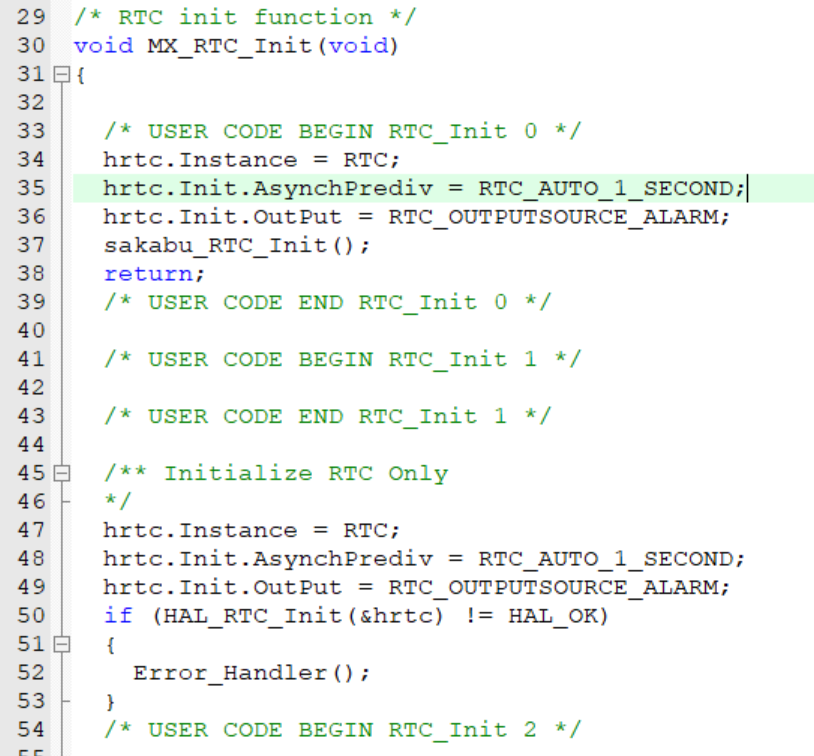
HAL库外设宝典:基于CubeMX的STM32开发手册(持续更新)
目录 前言 GPIO(通用输入输出引脚) 推挽输出模式 浮空输入和上拉输入模式 GPIO其他模式以及内部电路原理 输出驱动器 输入驱动器 中断 外部中断(EXTI) 深入中断(内部机制及原理) 外部中断/事件控…...

网络安全-HSTS
什么是HSTS? HTTP严格传输安全协议(HTTP Strict Transport Security,简称:HSTS) 是互联网安全策略机制。网站可以选择使用HSTS策略,来让浏览器强制使用HTTPS与网站进行通信,以减少会话劫持风险。…...

全程Kali linux---CTFshow misc入门(38-50)
第三十八题: ctfshow{48b722b570c603ef58cc0b83bbf7680d} 第三十九题: 37换成1,36换成0,就得到长度为287的二进制字符串,因为不能被8整除所以,考虑每7位转换一个字符,得到flag。 ctfshow{5281…...
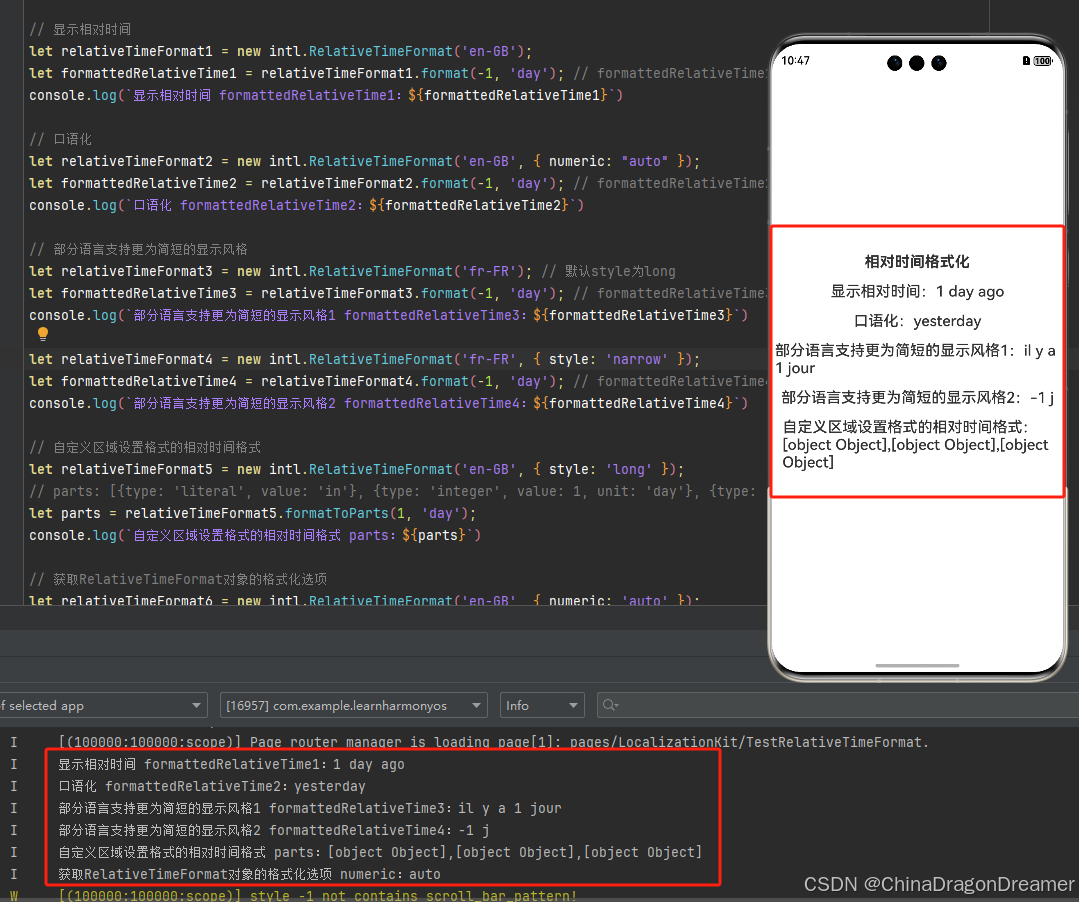
HarmonyOS:时间日期国际化
一、使用场景 在不同的国家和文化中,时间和日期格式的表示方法有所不同,使用惯例的不同点包括:日期中年月日的顺序、时间中时分秒的分隔符等。若应用中需展示时间日期,要确保界面以合适的方式显示,以便用户能够理解。 …...
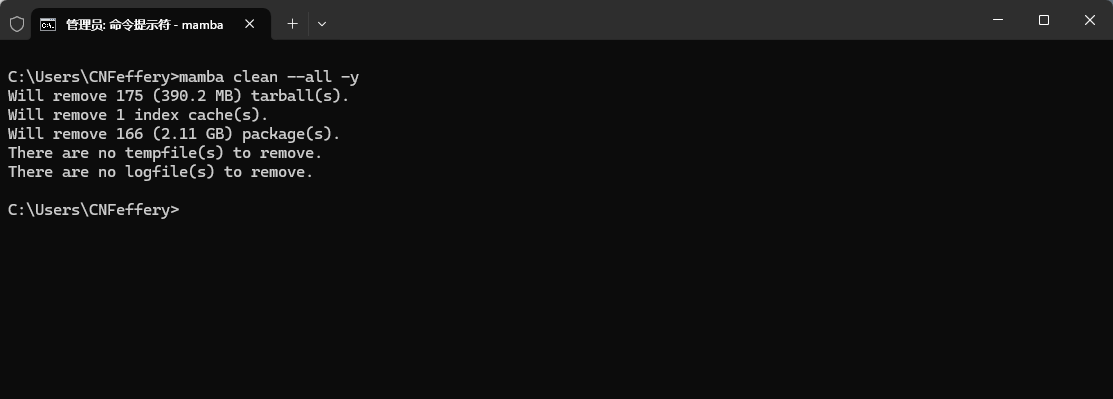
使用miniforge代替miniconda
conda作为Python数据科学领域的常用软件,是对Python环境及相关依赖进行管理的经典工具,通常集成在anaconda或miniconda等产品中供用户日常使用。 但长久以来,conda在很多场景下运行缓慢卡顿、库解析速度过慢等问题也一直被用户所诟病…...

LIMO:少即是多的推理
25年2月来自上海交大、SII 和 GAIR 的论文“LIMO: Less is More for Reasoning”。 一个挑战是在大语言模型(LLM)中的复杂推理。虽然传统观点认为复杂的推理任务需要大量的训练数据(通常超过 100,000 个示例),但本文展…...

【玩转 Postman 接口测试与开发2_018】第14章:利用 Postman 初探 API 安全测试
《API Testing and Development with Postman》最新第二版封面 文章目录 第十四章 API 安全测试1 OWASP API 安全清单1.1 相关背景1.2 OWASP API 安全清单1.3 认证与授权1.4 破防的对象级授权(Broken object-level authorization)1.5 破防的属性级授权&a…...

如何编写测试用例
代码质量管理是软件开发过程中的关键组成部分,比如我们常说的代码规范、代码可读性、单元测试和测试覆盖率等,对于研发人员来说单元测试和测试覆盖率是保障自己所编写代码的质量的重要手段;好的用例可以帮助研发人员确保代码质量和稳定性、减…...
)
复原IP地址(力扣93)
有了上一道题分割字符串的基础,这道题理解起来就会容易很多。相同的思想我就不再赘述,在这里我就说明一下此题额外需要注意的点。首先是终止条件如何确定,上一题我们递归到超过字符串长度时,则说明字符串已经分割完毕,…...

zzcms接口index.php id参数存在SQL注入漏洞
zzcms接口index.php id参数存在SQL注入漏洞 漏洞描述 ZZCMS 2023中发现了一个严重漏洞。该漏洞影响了文件/index.php中的某些未知功能,操纵参数id会导致SQL注入,攻击可能是远程发起的,该漏洞已被公开披露并可被利用。攻击者可通过sql盲注等手段,获取数据库信息。 威胁等级:…...

Redis03 - 高可用
Redis高可用 文章目录 Redis高可用一:主从复制 & 读写分离1:主从复制的作用2:主从复制原理2.1:全量复制2.2:增量复制(环形缓冲区) 3:主从复制实际演示3.1:基本流程准…...
)
系统URL整合系列视频四(需求介绍补充)
视频 系统URL整合系列视频四(需求补充说明) 视频介绍 (全国)大型分布式系统Web资源URL整合需求(补充)讲解。当今社会各行各业对软件系统的web资源访问权限控制越来越严格,控制粒度也越来越细。…...

激活函数篇 03 —— ReLU、LeakyReLU、ELU
本篇文章收录于专栏【机器学习】 以下是激活函数系列的相关的所有内容: 一文搞懂激活函数在神经网络中的关键作用 逻辑回归:Sigmoid函数在分类问题中的应用 整流线性单位函数(Rectified Linear Unit, ReLU),又称修正线性单元&a…...

山东大学软件学院人机交互期末复习笔记
文章目录 2022-2023 数媒方向2023-2024 软工方向重点题目绪论发展阶段 感知和认知基础视觉听觉肤觉知觉认知过程和交互设计原则感知和识别注意记忆问题解决语言处理影响认知的因素 立体显示技术及其应用红蓝眼镜偏振式眼镜主动式(快门时)立体眼镜 交互设…...

python 语音识别方案对比
目录 一、语音识别 二、代码实践 2.1 使用vosk三方库 2.2 使用SpeechRecognition 2.3 使用Whisper 一、语音识别 今天识别了别人做的这个app,觉得虽然是个日记app 但是用来学英语也挺好的,能进行语音识别,然后矫正语法,自己说的时候 ,实在不知道怎么说可以先乱说,然…...

docker常用命令及案例
以下是 Docker 的所有常用命令及其案例说明,按功能分类整理: 1. 镜像管理 1.1 拉取镜像 命令: docker pull <镜像名>:<标签>案例: 拉取官方的 nginx 镜像docker pull nginx:latest1.2 列出本地镜像 命令: docker images案例: 查看本地所有…...

DeepSeek-R1 云环境搭建部署流程
DeepSeek横空出世,在国际AI圈备受关注,作为个人开发者,AI的应用可以有效地提高个人开发效率。除此之外,DeepSeek的思考过程、思考能力是开放的,这对我们对结果调优有很好的帮助效果。 DeepSeek是一个基于人工智能技术…...

Java_双列集合
双列集合特点 存放的是键值对对象(Entry) Map 因为都是继承Map,所以要学会这些API,后面的类就都知道了 put 有两个操作,添加(并返回null)或者覆盖(返回被覆盖的值)…...

KubeSphere 容器平台高可用:环境搭建与可视化操作指南
Linux_k8s篇 欢迎来到Linux的世界,看笔记好好学多敲多打,每个人都是大神! 题目:KubeSphere 容器平台高可用:环境搭建与可视化操作指南 版本号: 1.0,0 作者: 老王要学习 日期: 2025.06.05 适用环境: Ubuntu22 文档说…...

TDengine 快速体验(Docker 镜像方式)
简介 TDengine 可以通过安装包、Docker 镜像 及云服务快速体验 TDengine 的功能,本节首先介绍如何通过 Docker 快速体验 TDengine,然后介绍如何在 Docker 环境下体验 TDengine 的写入和查询功能。如果你不熟悉 Docker,请使用 安装包的方式快…...

golang循环变量捕获问题
在 Go 语言中,当在循环中启动协程(goroutine)时,如果在协程闭包中直接引用循环变量,可能会遇到一个常见的陷阱 - 循环变量捕获问题。让我详细解释一下: 问题背景 看这个代码片段: fo…...
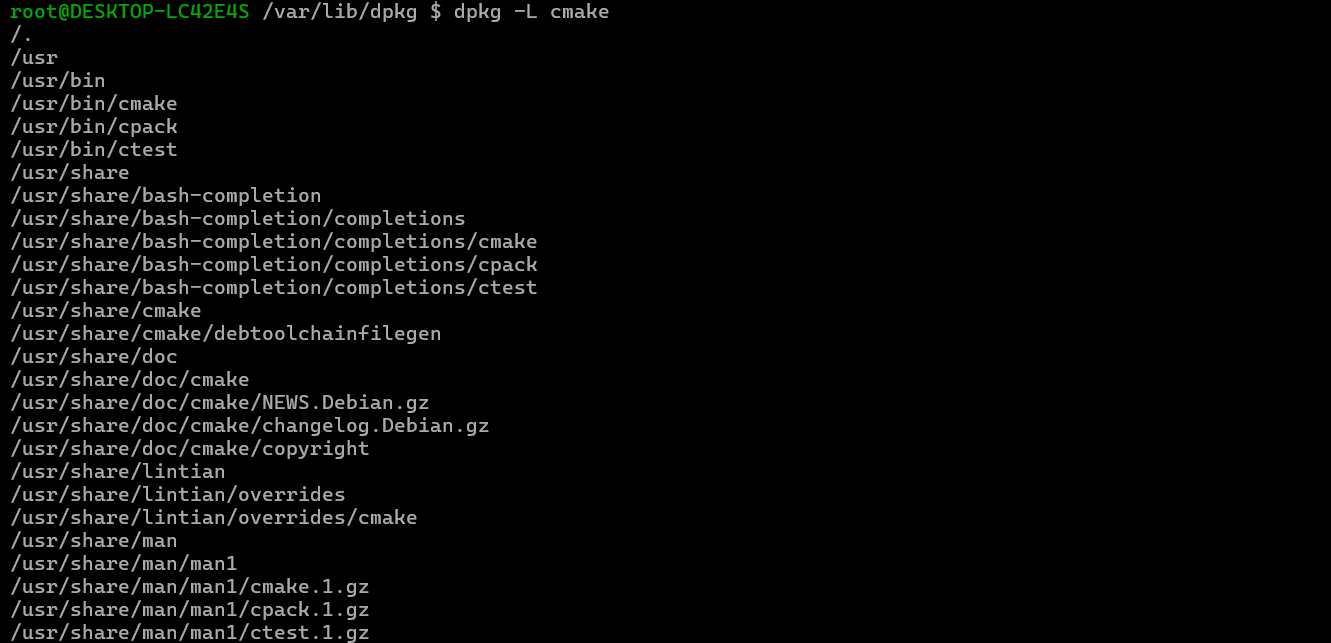
Debian系统简介
目录 Debian系统介绍 Debian版本介绍 Debian软件源介绍 软件包管理工具dpkg dpkg核心指令详解 安装软件包 卸载软件包 查询软件包状态 验证软件包完整性 手动处理依赖关系 dpkg vs apt Debian系统介绍 Debian 和 Ubuntu 都是基于 Debian内核 的 Linux 发行版ÿ…...
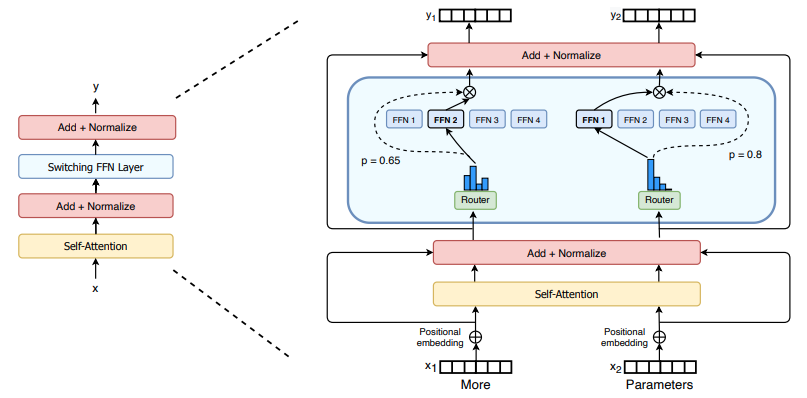
(二)TensorRT-LLM | 模型导出(v0.20.0rc3)
0. 概述 上一节 对安装和使用有个基本介绍。根据这个 issue 的描述,后续 TensorRT-LLM 团队可能更专注于更新和维护 pytorch backend。但 tensorrt backend 作为先前一直开发的工作,其中包含了大量可以学习的地方。本文主要看看它导出模型的部分&#x…...

从深圳崛起的“机器之眼”:赴港乐动机器人的万亿赛道赶考路
进入2025年以来,尽管围绕人形机器人、具身智能等机器人赛道的质疑声不断,但全球市场热度依然高涨,入局者持续增加。 以国内市场为例,天眼查专业版数据显示,截至5月底,我国现存在业、存续状态的机器人相关企…...
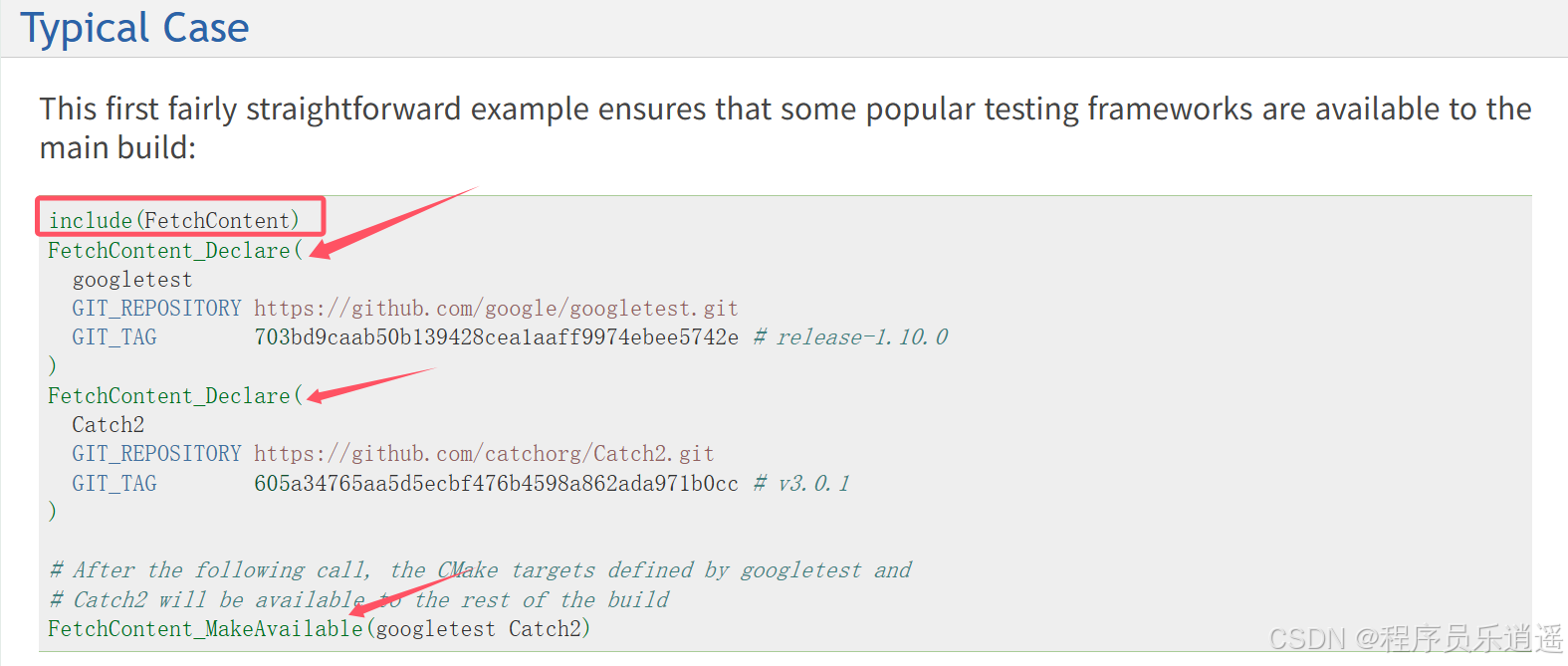
CMake 从 GitHub 下载第三方库并使用
有时我们希望直接使用 GitHub 上的开源库,而不想手动下载、编译和安装。 可以利用 CMake 提供的 FetchContent 模块来实现自动下载、构建和链接第三方库。 FetchContent 命令官方文档✅ 示例代码 我们将以 fmt 这个流行的格式化库为例,演示如何: 使用 FetchContent 从 GitH…...

实现弹窗随键盘上移居中
实现弹窗随键盘上移的核心思路 在Android中,可以通过监听键盘的显示和隐藏事件,动态调整弹窗的位置。关键点在于获取键盘高度,并计算剩余屏幕空间以重新定位弹窗。 // 在Activity或Fragment中设置键盘监听 val rootView findViewById<V…...
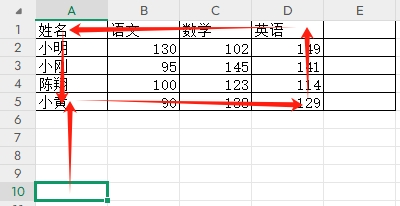
3-11单元格区域边界定位(End属性)学习笔记
返回一个Range 对象,只读。该对象代表包含源区域的区域上端下端左端右端的最后一个单元格。等同于按键 End 向上键(End(xlUp))、End向下键(End(xlDown))、End向左键(End(xlToLeft)End向右键(End(xlToRight)) 注意:它移动的位置必须是相连的有内容的单元格…...

Pinocchio 库详解及其在足式机器人上的应用
Pinocchio 库详解及其在足式机器人上的应用 Pinocchio (Pinocchio is not only a nose) 是一个开源的 C 库,专门用于快速计算机器人模型的正向运动学、逆向运动学、雅可比矩阵、动力学和动力学导数。它主要关注效率和准确性,并提供了一个通用的框架&…...
